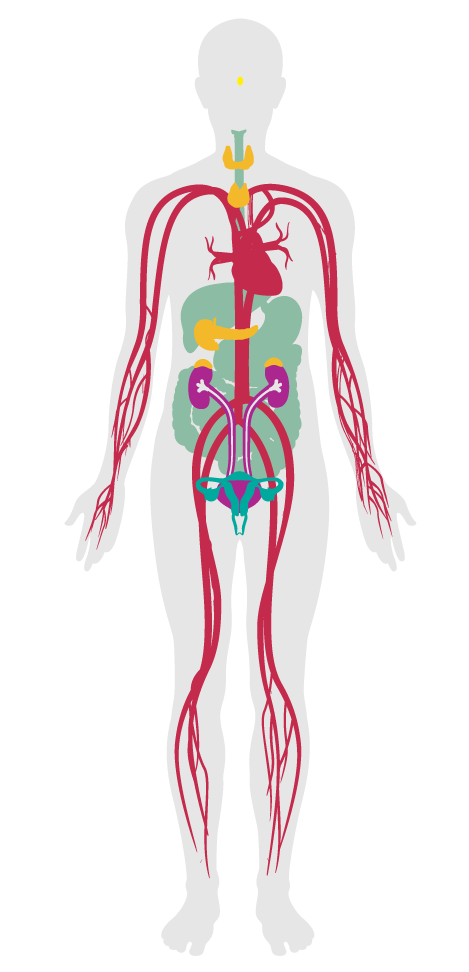Processed foods
Features/Nourishment/Feature 39
- 38 Fruits and vegetables
- 39 Processed foods
- 40 Food allergies
- 41 Hand washing
- 42 Food contamination
- 43 Artificial ingredients
- 44 Nutritional information
- 45 Food advertising
- 46 Safe food preparation materials
- 47 Serving sizes
- 48 Special diets
- 49 Responsible food production
- 50 Food storage
- 51 Food production
- 52 Mindful eating
- P1 Food environment
- P7 Strategic Dining Design
Processed foods
Intent:
To help occupants avoid highly-processed ingredients and foods.
BACKGROUND
Foods that contain highly processed ingredients tend to be high in sugar, calories and added fats, and have low nutritional value. More than half of the U.S. population consumes sugar-sweetened beverages on a given day, and the average consumption of added sugars is more than 22 teaspoons per day, even though the recommended limit is 6-9 teaspoons. High consumption of added sugars is associated with weight gain, obesity, type 2 diabetes, kidney disease, hypertension and other negative health effects.
All foods and beverages sold or provided on a daily basis on the premises by (or under contract with) the project owner, including in vending machines, meet the following conditions:
a.78
Beverages do not contain more than 30 g of sugar per container. Bulk containers of 1.9 L (2 quart) or larger are exempt from this requirement.
b.78
At least 50% of beverages have 1 g of sugar or less per 16 mL [1.87 g of sugar or less per 1 oz].
c.78
No non-beverage food item contains more than 30 g of sugar per serving.
d.55
In at least 50% of grain-based foods, a whole grain is the first ingredient.
Beverages available to early education and primary school students only include the following:
a.143
Water (plain or carbonated, without any flavoring or additives).
b.143
Milk (and milk alternatives) with no more than 22 g of sugar per container, up to 240 mL [8 oz] portions for early education and up to 360 mL [12 oz] portions for primary school students.
c.143
100% fruit and vegetable juice, up to 120 mL [4 oz] portions.
Beverages sold or distributed to secondary school students and adults are limited to the following:
a.143
Water (plain or carbonated, without any flavoring or additives).
b.143
Milk (and milk alternatives) with no more than 22 g of sugar per container, up to 360 mL [12 oz] portions.
c.143
100% fruit and vegetable juice, up to 240 mL [8 oz] portions.
d.146
Beverages that have no more than 1 g of sugar per 30 mL [1 oz], without non-caloric (non-nutritive or artificial) sweeteners.
All foods sold or distributed in the facility meet the following criteria:
a.143
Except for fruits and vegetables, all foods contain 35% or less of calories from sugar.
b.77
At least 90% of all foods do not contain any ingredients that are deep-fried.
c.55
In at least 50% of grain-based foods, a whole grain is the first ingredient.
d.144
Desserts contain 200 calories or less and 2 or more grams of dietary fiber.
e.143
No non-beverage food item contains more than 30 g of sugar per serving.
f.143
Foods are free of nonnutritive sweeteners.
g.144
If competitive foods are sold, they meet the USDA’s Smart Snacks in Schools Guidelines.

